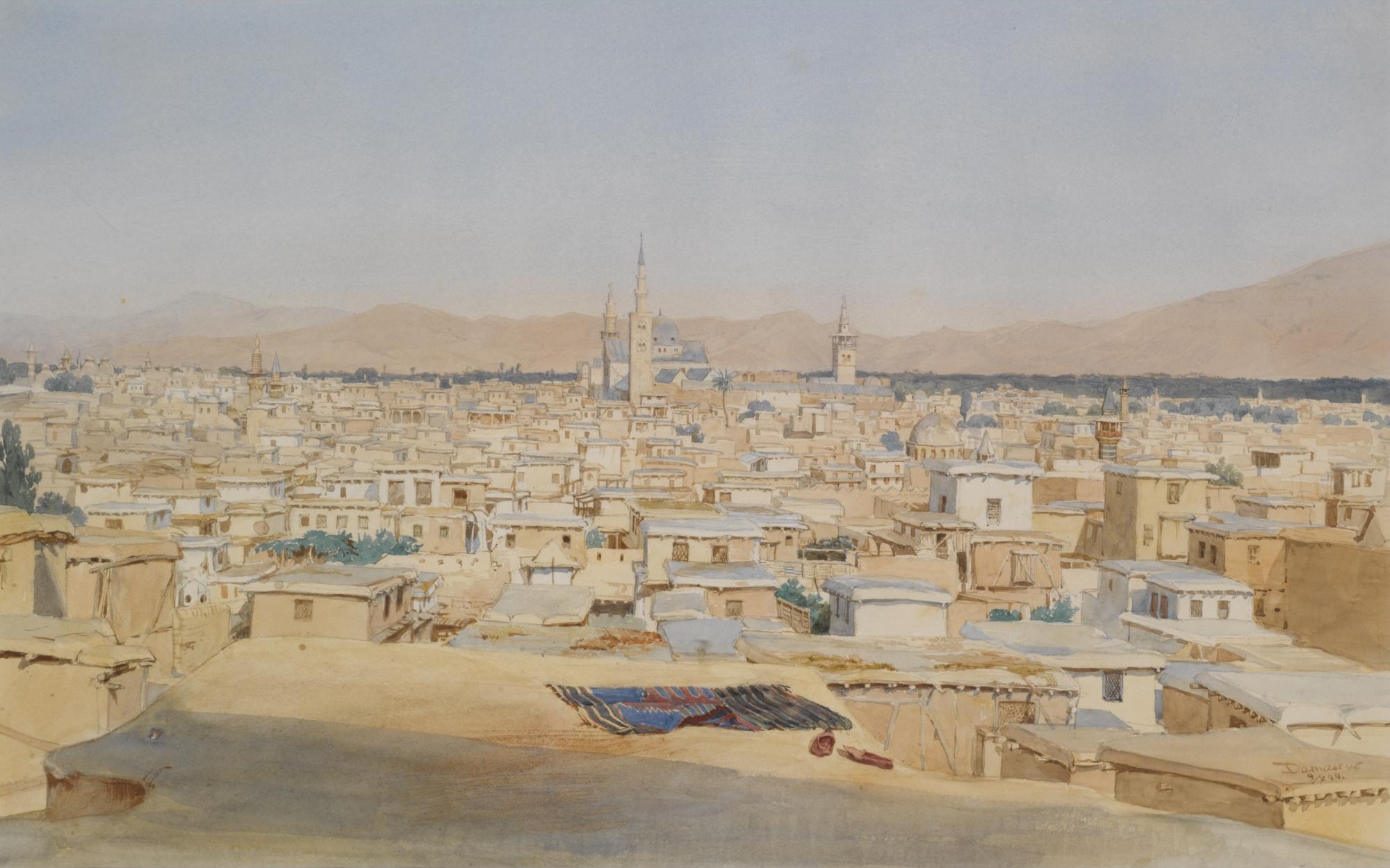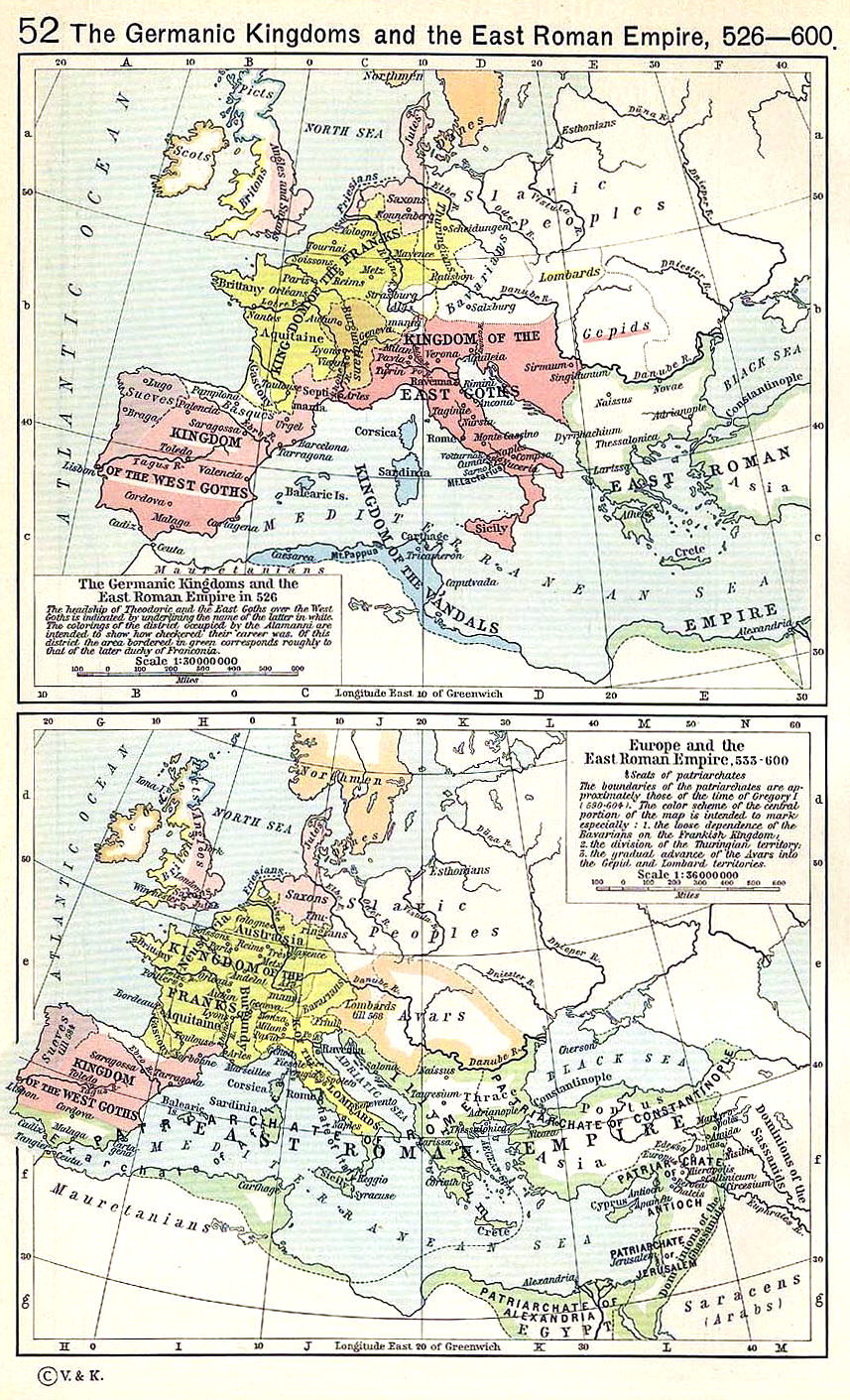|
678
__NOTOC__ Year 678 ( DCLXXVIII) was a common year starting on Friday of the Julian calendar. The denomination 678 for this year has been used since the early medieval period, when the Anno Domini calendar era became the prevalent method in Europe for naming years. Events By place Byzantine Empire * July 27 – The Siege of Thessalonica (676–678) ends, when the ''Sclaveni'' withdraw. * Autumn – Siege of Constantinople: Emperor Constantine IV confronts the Arab besiegers in a head-on engagement. The Byzantine fleet, equipped with Greek fire, destroys the Muslim fleet at Sillyon, ending the Arab threat to Europe, and forcing Yazid (a son of caliph Muawiyah I) to lift the siege on land and sea. The victory also frees up forces that are sent to raise the two-year siege of Thessalonica by the local Slavic tribes. Britain * King Æthelred of Mercia defeats the Northumbrian forces under King Ecgfrith, in a battle near the River Trent. Archbishop Theodore ... [...More Info...] [...Related Items...] OR: [Wikipedia] [Google] [Baidu] [Amazon] |
Siege Of Thessalonica (676–678)
The siege of Thessalonica in 676–678 was an attempt by the local Slavic tribes to capture the Byzantine city of Thessalonica, taking advantage of the preoccupation of the Byzantine Empire with the repulsion of the First Arab Siege of Constantinople. The events of the siege are described in the second book of the '' Miracles of Saint Demetrius''. Background In the reign of Justinian I (), Slavic tribes (''Sclaveni'') had already appeared on the Danube frontier of the Byzantine Empire. Over the next few decades, they raided into Thrace and Illyricum, while at times serving as mercenaries in the Byzantine army. From the 560s, the Slav communities came under the control of the newly established Avar Khaganate. Raids became larger and resulted in permanent settlement, especially as the Avars were able to capture fortified cities, leading to loss of imperial control over the surrounding areas. While the Byzantines were preoccupied in the East against the Persians, the 580s saw ev ... [...More Info...] [...Related Items...] OR: [Wikipedia] [Google] [Baidu] [Amazon] |
Muawiyah I
Mu'awiya I (–April 680) was the founder and first caliph of the Umayyad Caliphate, ruling from 661 until his death. He became caliph less than thirty years after the death of the Islamic prophet Muhammad and immediately after the four Rashidun ('rightly-guided') caliphs. Unlike his predecessors, who had been close, early companions of Muhammad, Mu'awiya was a relatively late follower of Muhammad. Mu'awiya and his father Abu Sufyan had opposed Muhammad, their distant Qurayshite kinsman and later Mu'awiya's brother-in-law, until Muhammad captured Mecca in 630. Afterward, Mu'awiya became one of Muhammad's scribes. He was appointed by Caliph Abu Bakr () as a deputy commander in the conquest of Syria. He moved up the ranks through Umar's caliphate () until becoming governor of Syria during the reign of his Umayyad kinsman, Caliph Uthman (). He allied with the province's powerful Banu Kalb tribe, developed the defenses of its coastal cities, and directed the war effort against ... [...More Info...] [...Related Items...] OR: [Wikipedia] [Google] [Baidu] [Amazon] |
Princess Tōchi
was a Japanese imperial princess during the Asuka period who was Empress of Japan as the wife of her cousin Emperor Kōbun. Her name Tōchi is derived from the Tōchi district, a neighbourhood located a few miles north of Asuka. Princess Tōchi was daughter of Emperor Tenmu and Princess Nukata. She married Prince Ōtomo, who became Emperor Kōbun. They lived in the capital of Ōtsu in the Ōmi Province (currently Ōtsu, Shiga). He succeeded after his father, Emperor Tenji, died. She subsequently was consort until Emperor Kōbun was killed by her father in the Jinshin War. After the war, she returned to Asuka and lived with her mother and her son in the Asuka Kiyomihara palace. In 675 she visited the Ise Grand Shrine with Princess Abe. In 678, she was appointed a Saiō by divination and was supposed to leave her residence to stay in in the 7th day of the 4th month, when she suddenly died in the residence. Upon her death, Prince Takechi composed three verses of lamenta ... [...More Info...] [...Related Items...] OR: [Wikipedia] [Google] [Baidu] [Amazon] |
Pope Agatho
Pope Agatho (577 – 10 January 681) served as the bishop of Rome from 27 June 678 until his death on 10 January 681. He heard the appeal of Wilfrid of York, who had been displaced from his see by the division of the archdiocese ordered by Theodore of Canterbury. During Agatho's tenure, the Sixth Ecumenical Council was convened to deal with monothelitism. He is venerated as a saint by both the Catholic and Eastern Orthodox churches. He is said to have been the longest lived Pope ever. Early life Little is known of Agatho before his papacy but he may have been among the many Sicilian clergy in Rome at that time, due to the Caliphate's attacks on Sicily in the mid-7th century. He served several years as treasurer of the church of Rome. He succeeded Donus in the pontificate.Butler, Alban. ... [...More Info...] [...Related Items...] OR: [Wikipedia] [Google] [Baidu] [Amazon] |
Constantine IV
Constantine IV (); 650 – 10 July 685), called the Younger () and often incorrectly the Bearded () out of confusion with Constans II, his father, was Byzantine emperor from 668 to 685. His reign saw the first serious check to nearly 50 years of uninterrupted Early Muslim conquests, Arab expansion, most notably his Siege of Constantinople (674–678), successful defence of Constantinople, and the temporary stabilization of the Byzantine Empire after decades of war, defeats, and civil strife. His calling of the Sixth Ecumenical Council saw the end of the monothelitism controversy in the Byzantine Empire; for this, he is venerated as a saint in the Eastern Orthodox Church, with his feast day on September 3 (Eastern Orthodox liturgics), September 3.September 3/September 16 Orthodox Calendar (PRAVOSLAVIE.RU). E ...
|
Sclaveni
The ' (in Latin language, Latin) or ' (Sclaveni#Terminology, various forms in Greek language, Greek) were Early Slavs, early Slavic tribes that raided, invaded and settled in the Balkans in the Early Middle Ages and eventually became one of the progenitors of modern South Slavs. They were mentioned by early Byzantine Empire, Byzantine chroniclers as Barbarians in the Byzantine Empire, barbarians having appeared at the Byzantine borders along with the Antes (people), Antes (East Slavs), another Slavic group. The Sclaveni were differentiated from the Antes and Wends (West Slavs); however, they were described as kin. Eventually, most South Slavic tribes accepted Byzantine Empire, Byzantine or Francia, Frankish suzerainty, and came under their cultural influences and Chalcedonian Christianity. The term was widely used as a general catch-all term until the emergence of separate tribal names by the 10th century. Customs The Sclaveni had similar if not identical customs and culture to ... [...More Info...] [...Related Items...] OR: [Wikipedia] [Google] [Baidu] [Amazon] |
Onmyōdō
is a technique that uses knowledge of astronomy and calendars to divine good fortune in terms of date, time, direction and general personal affairs, originating from the philosophy of the yin-yang and the five elements. The philosophy of yin and yang and '' wuxing'' was introduced to Japan at the beginning of the 6th century, and, influenced by Taoism, Buddhism, and Confucianism, evolved into the earliest system of around the late 7th century. In 701, the Taiho Code established the departments and posts of who practiced in the Imperial Court, and was institutionalized. From around the 9th century during the Heian period, interacted with Shinto and in Japan, and developed into a system unique to Japan. Abe no Seimei, who was active during the Heian period, is the most famous ( practitioner) in Japanese history and has appeared in various Japanese literature in later years. was under the control of the imperial government, and later its courtiers, the Tsuchimikado family, ... [...More Info...] [...Related Items...] OR: [Wikipedia] [Google] [Baidu] [Amazon] |
Thessalonica
Thessaloniki (; ), also known as Thessalonica (), Saloniki, Salonika, or Salonica (), is the second-largest city in Greece (with slightly over one million inhabitants in its metropolitan area) and the capital city, capital of the geographic regions of Greece, geographic region of Macedonia (Greece), Macedonia, the administrative regions of Greece, administrative region of Central Macedonia and the Decentralized Administration of Macedonia and Thrace. It is also known in Greek as , literally "the co-capital", a reference to its historical status as the "co-reigning" city () of the Byzantine Empire alongside Constantinople. Thessaloniki is located on the Thermaic Gulf, at the northwest corner of the Aegean Sea. It is bounded on the west by the Axios Delta National Park, delta of the Axios. The Thessaloniki (municipality), municipality of Thessaloniki, the historical centre, had a population of 319,045 in 2021, while the Thessaloniki metropolitan area had 1,006,112 inhabitants and ... [...More Info...] [...Related Items...] OR: [Wikipedia] [Google] [Baidu] [Amazon] |
Siege Of Constantinople (674–78)
Constantinople (part of modern Istanbul, Turkey) was built on the land that links Europe to Asia through Bosporus and connects the Sea of Marmara and the Black Sea. As a transcontinental city within the Silk Road, Constantinople had a strategic value for many empires and kingdoms who tried to conquer it throughout history. Known as Byzantium in classical antiquity, the first recorded siege of the city occurred in 510 BC by the Achaemenid Empire under the command of Otanes. Following this successful siege, the city fell under the rule of Persians until it won its independence again, and around 70 BC it became part of the Roman Republic, which was succeeded by the Roman Empire. Despite being part of Rome, it was a free city until it came under siege by Septimius Severus between 193–196 and was partially sacked during the civil war. After it was captured by Constantine the Great in 324, it became the capital of the Roman Empire, under the name of New Rome. It later became known ... [...More Info...] [...Related Items...] OR: [Wikipedia] [Google] [Baidu] [Amazon] |
Yazid I
Yazid ibn Mu'awiya ibn Abi Sufyan (; 11 November 683), commonly known as Yazid I, was the second caliph of the Umayyad Caliphate, ruling from April 680 until his death in November 683. His appointment by his father Mu'awiya I () was the first hereditary succession to the caliphate in Islamic history. His caliphate was marked by the death of Muhammad's grandson Husayn ibn Ali and the start of the crisis known as the Second Fitna. During his father's caliphate, Yazid led several campaigns against the Byzantine Empire, including an attack on the Byzantine capital, Constantinople. Yazid's nomination as heir apparent in (56 AH) by Mu'awiya was opposed by several Muslim grandees from the Hejaz region, including Husayn and Abd Allah ibn al-Zubayr. The two men refused to recognize Yazid following his accession and took sanctuary in Mecca. When Husayn left for Kufa in Iraq to lead a revolt against Yazid, he was killed with his small band of supporters by Yazid's forces in the Batt ... [...More Info...] [...Related Items...] OR: [Wikipedia] [Google] [Baidu] [Amazon] |
May 3
Events Pre-1600 * 752 – Mayan king Bird Jaguar IV of Yaxchilan in modern-day Chiapas, Mexico, assumes the throne. * 1481 – The largest of three earthquakes strikes the island of Rhodes and causes an estimated 30,000 casualties. * 1491 – Kongo monarch Nkuwu Nzinga is baptised by Portuguese missionaries, adopting the baptismal name of João I. *1568 – Angered by the brutal onslaught of Spanish troops at Fort Caroline, a French force burns the San Mateo fort and massacres hundreds of Spaniards. 1601–1900 * 1616 – Treaty of Loudun ends a French civil war. * 1715 – A total solar eclipse is visible across northern Europe and northern Asia, as predicted by Edmond Halley to within four minutes accuracy. * 1791 – The Constitution of May 3 (the first modern constitution in Europe) is proclaimed by the Sejm of Polish–Lithuanian Commonwealth. * 1802 – Washington, D.C. is incorporated as a city after Congress abolishes the Bo ... [...More Info...] [...Related Items...] OR: [Wikipedia] [Google] [Baidu] [Amazon] |
Byzantine Navy
The Byzantine navy was the Navy, naval force of the Byzantine Empire. Like the state it served, it was a direct continuation from its Roman navy, Roman predecessor, but played a far greater role in the defence and survival of the state than its earlier iteration. While the fleets of the Roman Empire faced few great naval threats, operating as a policing force vastly inferior in power and prestige to the Roman army, army, command of the sea became vital to the very existence of the Byzantine state, which several historians have called a "maritime empire". The first threat to Roman hegemony in the Mediterranean Sea was posed by the Vandals in the 5th century, but their threat was ended by the wars of Justinian I in the 6th century. The re-establishment of a permanently maintained fleet and the introduction of the dromon galley in the same period also marks the point when the Byzantine navy began departing from its late Roman roots and developing its own characteristic identity. Thi ... [...More Info...] [...Related Items...] OR: [Wikipedia] [Google] [Baidu] [Amazon] |








